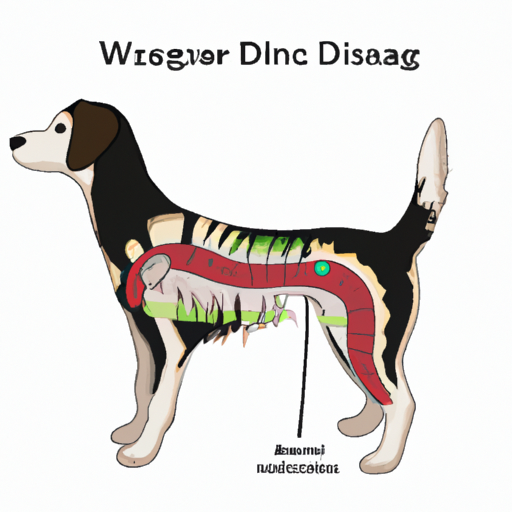As a caregiver, your pet’s wellbeing is surely your topmost priority. You’re always on the lookout for anything that might cause harm to your beloved four-legged companion. Making sure they’re in good health is a big part of your role, and understanding the ins and outs of various health conditions is crucial. Today, we’re going to delve into one such condition that often affects dogs – IVDD.
What is IVDD?
InterVertebral Disc Disease, abbreviated as IVDD, is a condition where the cushioning discs between the vertebrae of the spinal column either bulge or burst (herniate) into the spinal cord space. These discs then press on the nerves running through the spinal cord, causing pain, nerve damage, and even paralysis.
The Symptoms of IVDD
It’s important to know what symptoms to look for. The following are the most common signs that your dog might be suffering from IVDD:
- Reluctance to jump
- Pain and weakness in rear legs
- Crying out in pain
- Anxious behavior
- Muscle spasms over the back or neck
- Hunched back or neck with tense muscles
The Causes and Risk Factors
Understanding what causes IVDD and the risk factors associated with it is key in preventing it. Some breeds are more prone to IVDD due to their genetic makeup. These include:
- Dachshunds
- Beagles
- Basset Hounds
- American Cocker Spaniels
- Shih Tzus
Age is also a factor, with IVDD typically occurring in dogs between the ages of 4-6 years old.
Treatment Options for IVDD
If your dog is diagnosed with IVDD, there are several treatment options available. The right choice depends on the severity of the condition. Here’s a quick summary:
| Severity Level | Treatment Option |
|---|---|
| Mild | Conservative management (rest, pain management) |
| Moderate | Physical therapy, Acupuncture |
| Severe | Surgery |
Preventing IVDD
Preventing IVDD largely involves lifestyle changes. Here are some simple steps you can take:
- Maintain a healthy weight for your dog
- Provide regular, controlled exercise
- Avoid activities that put stress on the spine (e.g., jumping off furniture)
Remember, prevention is always better than cure.
FAQs
To wrap up our discussion on IVDD, here are some frequently asked questions:
Q: Is IVDD a life-threatening condition?
A: If left untreated, severe cases of IVDD can be life-threatening. But with early detection and proper treatment, many dogs live a happy, normal life.
Q: Can IVDD be cured?
A: There’s no absolute cure for IVDD. However, it can be managed with treatment and lifestyle changes.
Q: Is my dog in pain from IVDD?
A: Yes, IVDD can be very painful for dogs. That’s why it’s so important to recognize symptoms early and seek veterinary care.
Knowledge is power in the fight against IVDD. With this understanding, you’re better equipped to ensure your furry friend stays as healthy and happy as possible.



